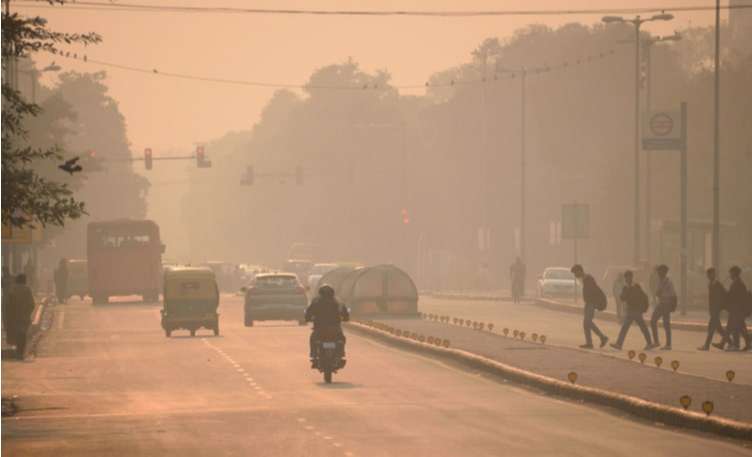
What are the five pollutants in the atmosphere?
Any agent that alters the natural properties of the atmosphere, whether it be chemical, physical, or biological, is considered an air pollutant. Air pollution can occur indoors or outdoors. Common sources of air pollution include motor vehicles, industrial facilities, household combustion appliances, and forest fires.
What causes smog in the atmosphere?
Air pollution results when dangerous gases and chemicals are released into the atmosphere. These pollutants include sulphur dioxide, nitrogen oxide, and particulate matter (very small particles that enter our respiratory system).
[ Checkout! new article on ICSE chemistry class 9 ]
The majority of these pollutants are released by human activity, including burning fossil fuels, driving, and emissions from industry and agriculture.
Particulate matter (PM10 and PM2) is one of the common air pollutants.
- Granular matter (PM10 and PM2.5)
- Ozone (O3)
- Nitrogen dioxide (NO2)
- Carbon monoxide (CO)
- Sulphur dioxide (SO2)
Granular matter (PM10 and PM2.5)
The term “particulate matter,” also known as “particle pollution” or “PM,” refers to very small solid and liquid droplets suspended in the atmosphere. Numerous substances, such as nitrates, sulphates, organic chemicals, metals, soil or dust particles, and allergens, can be found in particulate matter (such as fragments of pollen or mould spores). The main sources of particle pollution are industry, wood-burning heaters, and motor vehicles. Particle pollution can reach extremely high concentrations during bushfires or dust storms.
Ozone (O3)
Three oxygen atoms are joined to form ozone, or O3. The fundamental oxygen molecule, O2, is made up of two joined oxygen atoms. Ozone is a gas that is unstable and highly reactive due to the extra third atom. Both the upper atmosphere and the ground level of the Earth’s atmosphere contain ozone. The upper atmosphere’s ozone shields us from harmful ultraviolet radiation from the sun.
On the other hand, ground-level ozone is bad for our health. The main ingredient in smog, ground level ozone, is created when sunlight interacts with emissions from sources like motor vehicles and industry. Summertime is when ground level ozone is most likely to form, and the afternoon or early evening is when it is most prevalent.
Ozone can disperse widely and build up to high concentrations far from the original pollutant sources. Even at low concentrations, ground-level ozone can be dangerous to our health. Included in this is ozone produced by ozone generators.
NO2 (Nitrogen Dioxide)
Nitrogen dioxide is a highly reactive gas that is created by emissions from gas stoves, unflued gas heaters, industry, and motor vehicles. High concentrations can be found indoors, especially in areas with unflued gas heaters and close to busy roads.
Other indoor sources may include gas cooking or cigarette smoke. Outside, nitrogen dioxide helps to create particulate matter pollution and ground-level ozone (O3). Nitrogen dioxide is a respiratory irritant and affects the respiratory system negatively in a number of ways.
Carbon monoxide (CO)
Carbon monoxide is a colourless gas that is slightly less dense than air. It is extremely poisonous, odourless, tasteless, and flammable. One carbon atom and one oxygen atom bound together by three bonds make up carbon monoxide. The oxocarbon family’s simplest molecule is this one.
Leave your outdoor heaters and grills outside as the days and nights grow colder.
Carbon monoxide, a poisonous gas that you can’t see, taste, or smell, is produced by outdoor heaters and barbecues.
Carbon monoxide gas, which is present inside your home, can kill you instantly.
Sulphur dioxide (SO2)’
Sulfur dioxide is a gas with a strong, unpleasant odour that is highly reactive. Fossil fuel combustion occurs in power plants and other industrial facilities where it is created.
Volcanic eruptions, the breakdown and combustion of organic matter, and spray from the sea are some examples of natural processes that release sulphur gases. It helps to create air pollution from particulate matter. Sulfur dioxide can aggravate pre-existing respiratory conditions, particularly asthma, by irritating the lining of the nose, throat, and lungs. Additionally, it has been discovered to make cardiovascular diseases worse.
2 Facts You Should Know About Air Pollution in India
After malnutrition, air pollution is India’s second-largest public health risk.
The World Health Organization’s standards for air quality are not met by almost all of India’s population. This is a very alarming statistic because prolonged exposure to unclean air can hasten lung ageing or capacity loss and raise the risk of respiratory illnesses. Although nobody is immune to air pollution, kids are most at risk. In India, air pollution killed more than 116,000 infants within a month of birth in 2019, according to the State of Global Air 2020 report (and a total of 1.67 million Indians). Children’s brain development and cognitive abilities are harmed by exposure to poor air.
Over 100 cities in India have been classified as “non-attainment” due to air pollution.
The National Clean Air Program (NCAP), the nation’s first-ever pan-India air quality initiative, was introduced by the central government in 2019. The program’s objective is to reduce particulate pollution by 20–30% by 2024. For 132 non-attainment1 or million-plus cities, pollution control boards created tailored clean air plans under the NCAP that outlined sector-specific strategies. Only 25% of these plans used information on pollution sources when developing their control strategies, according to a CEEW assessment. Such information is crucial for prioritizing actions in light of the particular air quality problems that each city faces. Instead, its absence caused plans to be duplicated in a number of cities and states. Furthermore, without explicitly defining each agency’s responsibilities, the NCAP plans distribute more than 40% of the total number of listed pollution control activities among multiple agencies. This might lead to dispersed accountability and prevent coordination.
